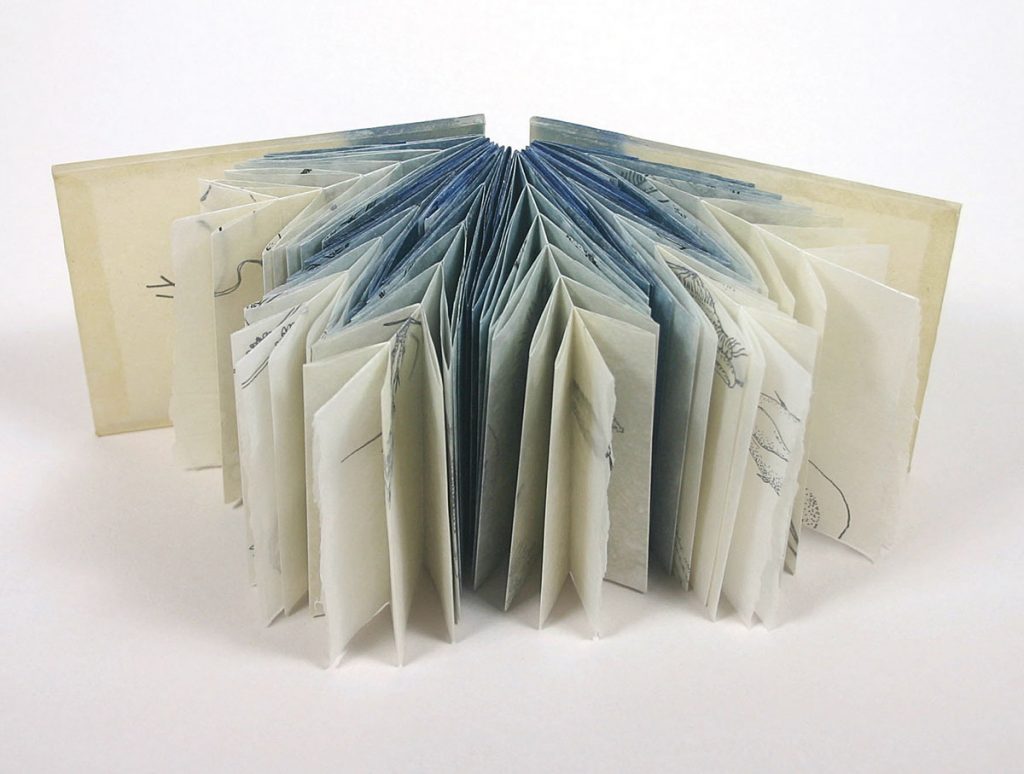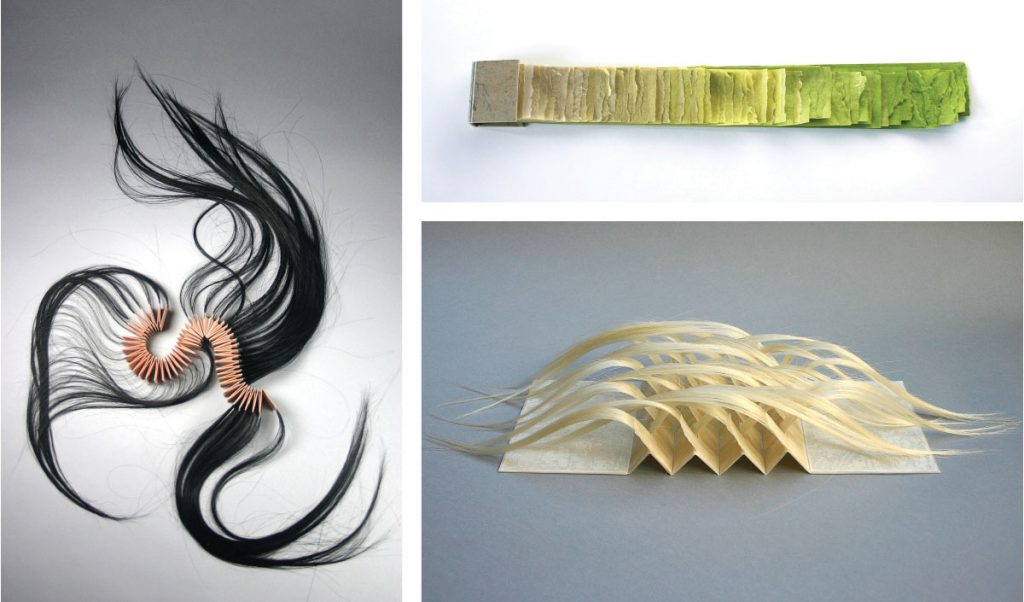
Karen Hardy is a fine artist who works with the eye of a mad scientist. “When paper is made, it starts with pulp floating in water,” she explains. “You can beat the pulp a long time to make it translucent. When it dries, it shrinks and puckers.
“For a traditional papermaker, those would be unacceptable flaws. But I just like to see what happens when I’m playing around.”
Hardy, who holds an MFA from the University of the Arts in Philadelphia, attended the NC School of Science and Math during high school. Then she took biology classes at Duke University while earning a psychology degree, studied marine biology in Bermuda, and worked at a botanical garden and as a landscape designer.

No wonder she approaches her sculpture and installation projects like a scientist, inspired by the twin muses of biology and curiosity. “I set up experiments. I take detailed notes. Usually what I find interesting is something that resonates as a reference to biological forms and systems. I don’t always have a goal in mind, I’m just curious.”
She’ll sometimes manipulate wet paper pulp that has translucent fibers and a membrane-like quality. As she fleshes out her composition, art imitates life in surprisingly visceral ways. “It starts to look like skin, with veins in it, and I just play it up.
“Even if viewers have a negative reaction, I don’t mind. The same material can be seen differently in a different context. Hair on someone’s head is beautiful, but on the ground it’s disgusting. There’s a fine line between what is beautiful and what is gro-tesque or repulsive.”

And Hardy isn’t afraid to paint outside those fine lines to elicit a response. One piece has actual blonde hair in it, and when it’s picked up, the hair lightly brushes against the viewer’s wrist. “I enjoy when people don’t know exactly what they’re looking at and are intrigued and look closer. I gravitated toward making books because they are meant to be touched and interacted with, not just looked at. You pick up a book and all the senses are engaged.”
Her books are densely layered and imaginative, often surreal. She notes that paper offers endless possibilities to try different things. “That’s what makes it so fun. What if pages weren’t really pages, but were like little rooms or something?”
To gain more space for her experiments, Hardy is currently converting a barn in rural Mitchell County into her new studio-slash-art-laboratory (she’ll also eventually hold classes there). The centerpiece is a nearly 2,000-pound, circa-1909 letterpress machine that she spent a year restoring and putting back into service to create artists’ books, greeting cards, and other ephemera.

She shares her unusual techniques in workshops at Warren Wilson College, Western Carolina University, the John C. Campbell Folk School, and further afield, and her award-winning work is collected across the nation and abroad. Most of it wind ups in universities and libraries, in special collections devoted to book arts, a genre that flourishes at the intersection of collectable visual art and reading material.
“It’s definitely an obscure niche,” Hardy acknowledges. “But I sell out everything I make — there are librarians who really want this stuff.”
Karen Hardy, Mitchell County. For more information about the artist, visit khardy.com (also: @khardystudio on Instagram and Hardy Letterpress on Etsy). The artist teaches online workshops at Book, Paper, Thread: see www.bookpaperthread.com for a schedule.